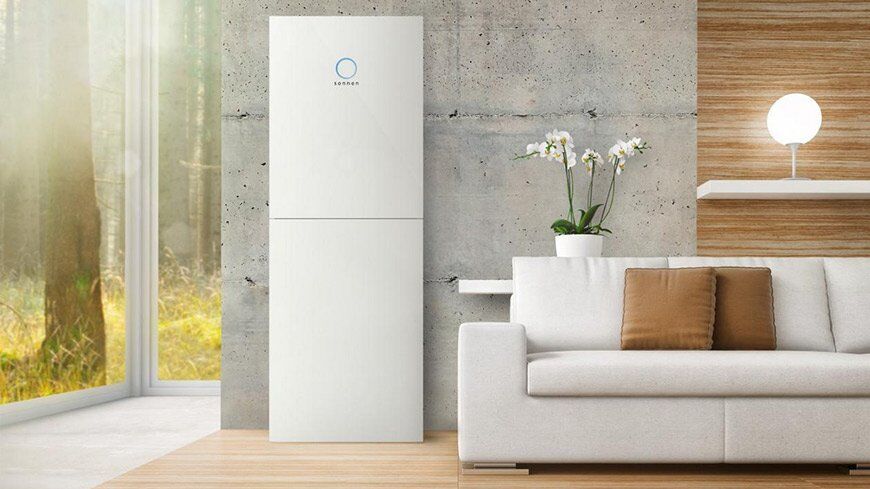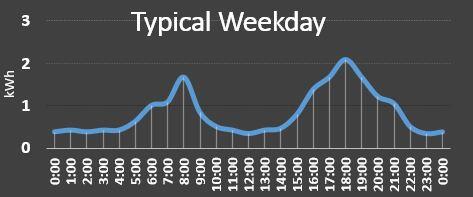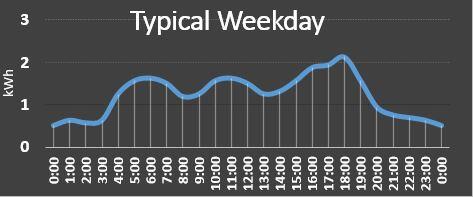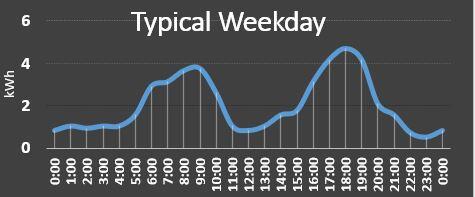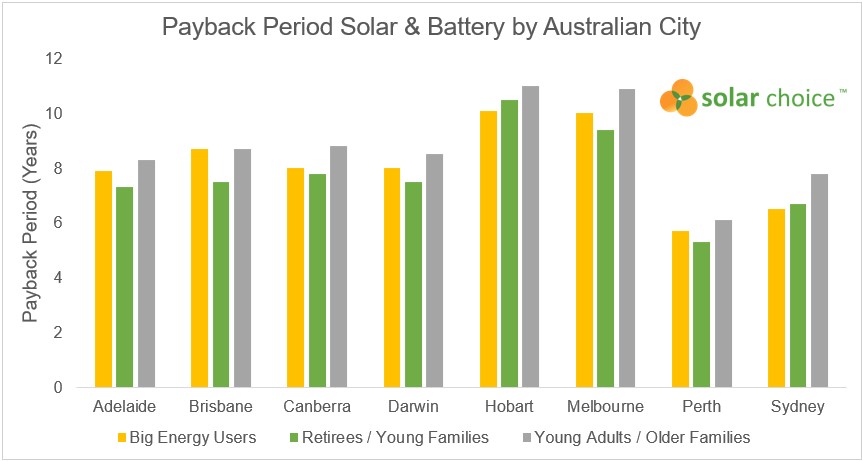The question of whether batteries are worth it and affordable is long debated in the solar industry. Our experts have taken a deep dive into a number of use cases to help Australians work out whether its a worthwhile investment in their scenario.
To be as transparent as possible, we’ve detailed our approach and methodology in this article. Please send through any feedback and we will take it into consideration for our next update.
3 User Types Identified for Solar Battery Storage
To make the results relevant for your situation we recommend looking at the below 2 scenarios for a solar battery and pick the one that is the closest fit. We have considered 3 common user types and matched their electrical usage patterns with data we have in our model. If there is nothing you believe to be relevant to your situation, you can read our methodology and put your own parameters into the Solar Choice Solar & Battery Calculator – Advanced Version.
Sizing the Solar Panels and Solar Batteries for Each User Type
To get the greatest utility from your solar battery you need to ensure that it will still be able to fully charge from your Solar Panels most days through winter when you are receiving the lowest amount of sunlight. In our calculator, we looked at various solar battery options and found the below options provided a good balance between grid energy independence and financial return. You can also use our advanced calculator to trial different battery sizes and see what size could be charged most days through the months with the lowest sunlight (June, July and August).
Given system performances will depend on sunlight patterns and the location within Australia, for the below figures we have used data from Sydney’s weather patterns. You will see that our results have been broken down into capital cities and our calculator has all the data built in.
| Average Usage Per day | Optimal Solar System Size | Solar Output in Winter | Solar Output in Summer | Solar Battery System Size | |
| 1. Young adults / Older Family | 20kWh | 5 kW | 13 kWh / day | 24 kWh / day | 3.5 kWh |
| 2. Retirees / Young Family | 30kWh | 6.6 kW | 18 kWh / day | 31 kWh / day | 6.5 kWh |
| 3. Big energy user | 50kWh | 13 kW | 35 kWh / day | 62 kWh / day | 13.5 kWh |
Compare solar battery quotes from qualified installers online
Our Methodology and Key Assumptions
We inputted the below information in our advanced solar battery calculator which was developed by Solar Choice’s engineers. It utilises functionality from our proprietary solar project financial model which we have used to consult with businesses across many of Australia’s largest commercial solar roll outs and utility-scale solar farms.
Assumed Electricity Prices
Using our electricity plan comparison tool, we found some of the most competitive retail electricity plans on offer in each city (both flat and time of use) and plugged them into our solar power battery calculator. The figures we ended up using are detailed in the table below. (Important to note that the rates in the table below are inclusive of retailer discounts – for example, pay on time discounts and/or pay online discounts.)
| Solar Feed In Tariff
(cents per kWh) |
Flat Rate
(cents per kWh) |
Time Of Use Rates
(cents per kWh) |
|
| Adelaide | 8 | 34.47 | Peak 35.20
Shoulder 23.10 Off-peak 22.55 |
| Brisbane | 5 | 25.04 | Peak 34.59
Shoulder 24.25 Off-peak 19.71 |
| Canberra | 8 | 24.20 | Peak 34.04
Shoulder 24.13 Off-peak 17.12 |
| Darwin | 9.13 | 27.37 | Peak 32.29
Off-peak 24.62 |
| Hobart | 9 | 27.28 | Peak 33.40
Off-peak 15.56 |
| Melbourne | 5.2 | 20.82 | Peak 24.15
Off-peak 17.40 |
| Perth | 10c between 3pm to 9pm, otherwise 2.75c | 30.06 | Peak 57.17
Shoulder 29.94 Off-peak 15.75 |
| Sydney | 6.2 | 27.66 | Peak 49.06
Shoulder 20.04 Off-peak 13.56 |
Solar Battery Storage Options
We have selected to use the below home battery storage systems for each system size. 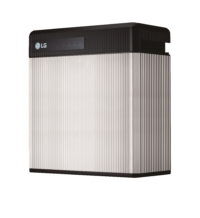 [Please note: Solar Choice is agnostic to product manufacturers and we have no desire to influence your choice of product. We have just selected products that are commonly used in the Australian market]
[Please note: Solar Choice is agnostic to product manufacturers and we have no desire to influence your choice of product. We have just selected products that are commonly used in the Australian market]
- For the ‘large’ solar battery system, we used Tesla Powerwall 2, which has a usable energy storage capacity of 13.5 kWh;
- For the ‘medium’ solar battery system, we used LG Chem RESU, which has a usable energy storage capacity of 6.5 kWh; and
- For the ‘small’ solar battery system, we used BYD B-Box, which has a usable storage capacity of 3.5 kWh.
All solar and battery output and technical information has been set in line with the verified product specifications published for each product. The results would not change materially if the above products were swapped for different brand names with the same capacity.
Other Assumptions (click to expand) ▼
Results by Each User Type
We have calculated the outputs from our calculator based on the individual characteristics of each energy user, system size, relevant system costs by each capital city in Australia. In the below sections we compare the following financial metrics:
- Payback Period Solar & Battery – the time it takes for the total savings for the project to recover the upfront costs of the solar and battery
- Payback Period Battery Only – the time it takes for the savings made by the battery to pay for the upfront battery cost (excl. solar costs and savings)
- Total Year 1 Savings – the amount the energy bill would be reduced by in the first year
Young Adults / Older Family
For Young Adults / Older Families we have assumed an average daily energy use of 20 kWhs. Given the assumed energy use patterns we have recommended 5kW of Solar Panels and a 3.5 kWh battery storage solution.
| Flat Rate | Time of Use Rates | ||||||
| City | Cost Estimate | Payback Period Solar & Battery | Payback Period Battery Only | Total Year 1 Savings | Payback Period Solar & Battery | Payback Period Battery Only | Total Year 1 Savings |
| Adelaide | $10,190 | 6.8 Years | >20 years | $1,584 | 8.3 Years | >20 Years | $1,240 |
| Brisbane | $10,690 | 9.1 Years | >20 Years | $1,160 | 8.7 Years | >20 Years | $1,230 |
| Canberra | $10,380 | 8.8 Years | >20 Years | $1,179 | 7.9 Years | 12 Years | $1,340 |
| Darwin | $13,200 | 9.2 Years | >20 Years | $1,409 | 8.5 Years | >20 Years | $1,546 |
| Hobart | $11,690 | 10.0 Years | >20 Years | $1,135 | 11.0 Years | >20 Years | $1,009 |
| Melbourne | $10,210 | 10.9 Years | >20 Years | $891 | 11.4 Years | >20 Years | $851 |
| Perth | $9,890 | 7.4 Years | >20 Years | $1,392 | 6.1 Years | 11.7 Years | $1,764 |
| Sydney | $10,160 | 8.3 Years | >20 Years | $1,233 | 7.8 Years | >20 Years | $1,325 |
Explore the numbers yourself with our Solar & Battery Storage Sizing & Payback Estimator tool
Retirees / Young families
For this energy profile we have assumed an average daily energy use of 30 kWhs with more energy being used during the daytime. Given the assumed energy use patterns we have recommended 6.6kW of Solar Panels and a 6.5 kWh battery storage solution.
| Flat Rate | Time of Use Rates | ||||||
| City | Cost Estimate | Payback Period Solar & Battery | Payback Period Battery Only | Total Year 1 Savings | Payback Period Solar & Battery | Payback Period Battery Only | Total Year 1 Savings |
| Adelaide | $12,855 | 5.7 Years | 14.6 Years | $2,491 | 7.3 Years | >20 Years | $1,830 |
| Brisbane | $13,895 | 7.7 Years | 18.9 Years | $1,846 | 7.5 Years | 14.0 Years | $1,916 |
| Canberra | $13,595 | 7.8 Years | >20 Years | $1,781 | 7.1 Years | 16.1 Years | $2,004 |
| Darwin | $17,165 | 8.1 Years | >20 Years | $2,136 | 7.5 Years | >20 Years | $2,364 |
| Hobart | $15,405 | 8.8 Years | >20 Years | $1,723 | 10.5 Years | >20 Years | $1,393 |
| Melbourne | $13,425 | 9.4 Years | >20 Years | $1,391 | 9.9 Years | >20 Years | $1,390 |
| Perth | $13,225 | 6.3 Years | 14.9 Years | $2,241 | 5.3 Years | 9.3 Years | $2,836 |
| Sydney | $13,365 | 7.1 Years | 17.7 Years | $1,948 | 6.7 Years | 11.7 Years | $2,105 |
Compare solar & battery quotes from qualified installers now
Big Energy User
For this energy profile we have assumed a high average daily energy use of 50 kWhs focused in mornings and evenings with some loads shifted to the daytime (e.g. swimming pool). Given the assumed energy use patterns we have recommended 13 kW of Solar Panels and a 13.5 kWh battery storage solution.
| Flat Rate | Time of Use Rates | ||||||
| City | Cost Estimate | Payback Period Solar & Battery | Payback Period Battery Only | Total Year 1 Savings | Payback Period Solar & Battery | Payback Period Battery Only | Total Year 1 Savings |
| Adelaide | $25,922 | 6.4 Years | >20 years | $4,333 | 7.9 Years | >20 Years | $3,336 |
| Brisbane | $25,870 | 8.1 Years | >20 years | $3,233 | 7.6 Years | >20 Years | $1,958 |
| Canberra | $25,064 | 8.0 Years | >20 Years | $3,139 | 7.2 Years | >20 Years | $3,690 |
| Darwin | $32,357 | 8.6 Years | 17.1 Years | $3,737 | 8.0 Years | 18.3 Years | $4,066 |
| Hobart | $28,496 | 9.2 Years | 18.7 Years | $3,009 | 10.1 Years | 17.9 Years | $2,704 |
| Melbourne | $24,882 | 10.0 Years | >20 Years | $2,418 | 10.4 Years | >20 Years | $2,450 |
| Perth | $25,896 | 7.0 Years | 12.6 Years | $3,880 | 5.7 Years | 7.9 Years | $5,057 |
| Sydney | $24,635 | 7.1 Years | 14.4 Years | $3,638 | 6.5 Years | 9.9 Years | $4,077 |
Solar Battery Storage Payback Results by Australian city
The attractiveness of a battery storage system varies depending on if you reside in Adelaide, Brisbane, Canberra, Darwin, Hobart, Melbourne, Perth or Sydney. Each city has its own significant variables including sunlight patterns, energy costs and solar system prices. We have input these parameters in our model and compared the outcomes in the below graph.
Based on our analysis Perth, Canberra and Sydney are the best cities to install solar batteries. Sydney and Perth are suffering from high energy prices and have attractive sunlight hours for solar projects. Hobart offers the worst return on investment due to unfavourable sunlight patterns and more expensive solar project costs.
Conclusion: Batteries are still too expensive in most scenarios
When looking only at the revenues that the battery storage system will add to your solar project, across the 48 scenarios we compared, there were only 2 cases where the revenue from the battery paid for itself within its warrantied lifetime. In most cases that means, if your main goal is to make a financial return from your solar project, you are best off just installing a grid connected solar system and using grid-power during the evenings and nights.
The main reason behind batteries still not being worth it, is their price has remained steady over the last 3-4 years (or increased significantly in the case of the Tesla Powerwall). Previously Solar Choice has estimated that residential solar battery prices would need to fall to $200-$300 per kWh of battery capacity installed to provide an attractive return, while the current market price is closer to $1,000 per kWh. Although at very large scale we are seeing batteries deployed in South Australia and Victoria, they operate under a completely different revenue profile which is progressively making more sense.
This analysis does not include any additional revenue a battery owner could earn from participating in a Virtual Power Plant (VPP). It is difficult to accurately forecast revenue from these schemes as most of them depend on unusual pricing events occuring on the wholesale electricity market. At present it appears unlikely that these schemes would materially affect our conclusion to this analysis.
Since 2008 our knowledge and sophisticated software has allowed over 300,000 Australian households and businesses to make a well-informed choice on their solar & battery installer.
- Solar Panel Costs: Solar Choice Price Index | April 2025 - 1 April, 2025
- Solar Panels For Homes – All You Need to Know About Solar Systems - 18 March, 2025
- Best NSW Solar Feed-In Tariffs - 17 March, 2025
